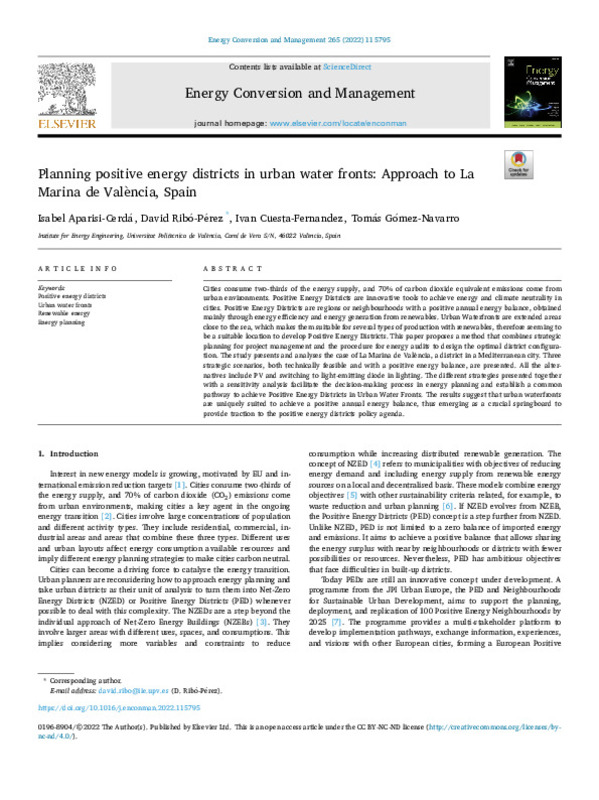JavaScript is disabled for your browser. Some features of this site may not work without it.
Buscar en RiuNet
Listar
Mi cuenta
Estadísticas
Ayuda RiuNet
Admin. UPV
Planning Positive Energy Districts in Urban Water Fronts: approach to La Marina de València, Spain
Mostrar el registro completo del ítem
Aparisi-Cerdá, I.; Ribó-Pérez, DG.; Cuesta-Fernandez, I.; Gómez-Navarro, T. (2022). Planning Positive Energy Districts in Urban Water Fronts: approach to La Marina de València, Spain. Energy Conversion and Management. 265:1-14. https://doi.org/10.1016/j.enconman.2022.115795
Por favor, use este identificador para citar o enlazar este ítem: http://hdl.handle.net/10251/183191
Ficheros en el ítem
Metadatos del ítem
| Título: | Planning Positive Energy Districts in Urban Water Fronts: approach to La Marina de València, Spain | |
| Autor: | ||
| Entidad UPV: |
|
|
| Fecha difusión: |
|
|
| Resumen: |
[EN] Cities consume two-thirds of the energy supply, and 70% of carbon dioxide equivalent emissions come from urban environments. Positive Energy Districts are innovative tools to achieve energy and climate neutrality in ...[+]
|
|
| Palabras clave: |
|
|
| Derechos de uso: | Reconocimiento - No comercial - Sin obra derivada (by-nc-nd) | |
| Fuente: |
|
|
| DOI: |
|
|
| Editorial: |
|
|
| Versión del editor: | https://doi.org/10.1016/j.enconman.2022.115795 | |
| Código del Proyecto: |
|
|
| Agradecimientos: |
|
|
| Tipo: |
|









